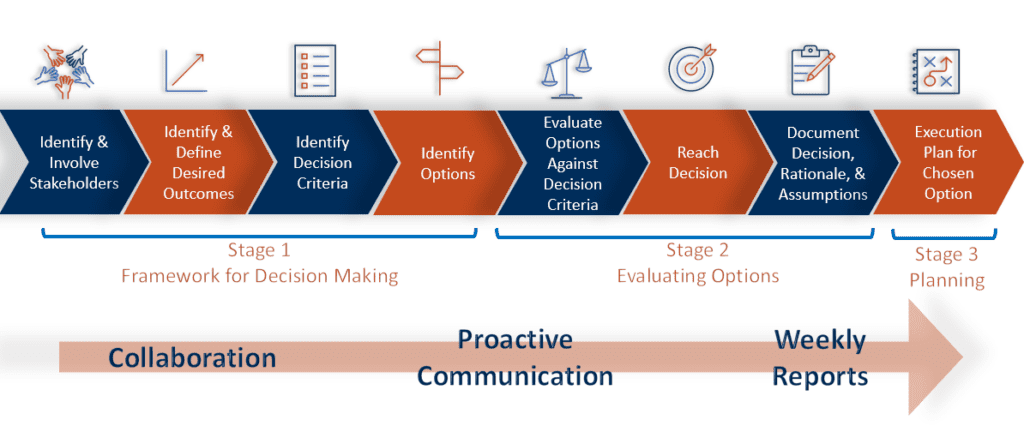
E Tech Group, Director of Operations, Cassy Gardner is featured as a part of the following article originally appearing in Food Engineering Magazine.
Below is a summarized version of the article. Click here to link to the full article.
The better you know what you already have in place, the easier it is to plan for a successful future.
Unless you operate a brand-new state-of-the-art plant, you probably have a facility with a mish-mash of aging processing and packaging equipment with various vintages of network and application software support—maybe several areas requiring manual labor. But even a brand-new plant today is tomorrow’s aging facility, eventually needing equipment and software updates to keep it running with minimal downtime, peak efficiency and consistent product quality.
For older facilities, knowing where and what to automate—what your priorities should be—is important to helping you stay competitive now and in the future. For those with new plants, it’s never too late to plan your future goals. In this article, we consider how to know when, where and what to automate in an older facility. Of course, the answers to these questions won’t be the same for every plant.
Automation Solving Labor Shortage Problems
The primary motivations driving food processors to automate their operations include labor reduction, increased production efficiency and enhanced product quality, says Ryan Beesley, CAP, regional engineering manager – Kennewick, Concept Systems, Inc., a Control System Integrators Association (CSIA) Certified Member. But the labor aspect has especially been an acute problem for the last couple of years.
Other Roles for Automation
- Quality
- Downtime Reduction
- Process Automation
- Standardization
Getting Started in the Planning Process
No two automation solutions will be the same—everyone is unique. “Custom automation solutions typically begin with a feasibility and concepting phase that involves a deep dive analysis of existing operations and data,” says Burns & McDonnell’s Campbell. “Following this, a detailed design and a firm cost estimate are provided. Finally, the onsite execution phase typically includes engineering oversight, construction and systems installation and startup services.”

“E Tech specializes in Front-End Engineering and Design (FEED) studies that help our clients approach their control systems strategically,” says Cassy Gardner, director of operations, Vacaville, Life Science, E Tech Group. “We have a proven process we bring to our clients to help them solve unwieldy, open-ended problems.
“What is most critical to success in our experience,” says Gardner, “is that needs and outcomes for all stakeholders are well-defined at the outset. Doing so systematically can unify stakeholders and reduce costly late-stage changes.”
What Areas are Easier to Automate?
Maybe a better question should be based on value, says Siemens’ Aparicio-Velazquez. “The decision to automate manufacturing areas should be focused on value rather than easiness or difficulty of implementation. Quick wins are OK. However, they must be obtained as the result of actions executed after exploring, identifying, deciding and analyzing the business drivers, considering all company stakeholders.”
What Areas are Tougher to Automate?
“Areas with a high level of work variability, a high level of manual tasks and a high number of unique items in the same area are the most difficult to automate,” says Glassdome’s Gabor. “Automation engineers must be pessimistic when developing an automation solution. We must consider every possible negative scenario and devise a solution to avoid it. The solution becomes increasingly difficult as the variability grows.”
Legacy Systems and Costs
“We have found that upgrade opportunities with legacy systems can be the most difficult sell since these systems are currently running a plant’s operation—and a replacement in some cases is only avoiding future downtime—the costs and definition of a true production ROI become a challenge,” says Cybertrol’s Barthel. It is difficult to sell an upgrade when a processor has an intent to minimize cost without looking at long-term gains that they can benefit from automation. Focusing on cost alone can prevent the manufacturer from implementing a more robust system that is less likely to have downtime due to legacy systems. An unwillingness to add additional instrumentation prevents the collection of very valuable information that is needed to improve production, adds Barthel.
“Gotchas” or the Hidden Issues Thwarting Successful Automation Projects
Finally, if you’re contemplating an automation project, there are always the hidden traps that can quash a successful endeavor. Some of these issues include:
- Lack of electrical services needed to support new equipment. Costs to build out these services can quickly add up if not managed before a project begins.
- Legacy and homegrown systems in both processing and the warehouse can slow a project if they can’t connect data to other systems.
- Lack of established and documented standards, wiring and network diagrams, etc. slows an automation project, especially if those who wrote the documents are no longer employed at the facility.
- SI or engineering house has not been made aware of all—especially legacy—systems at your facility.
- Lack of a best-practice infrastructure for your plant.
Automation Today and in the Future
Automation—you can’t live without it and be competitive. “Automation in many cases is viewed as a commodity, when in actuality, once the equipment is put in place and starts depreciating, automation is what drives profitability within a manufacturer’s operation,” says Cybertrol’s Barthel.
“Automation is just as good as how it is integrated into your company’s operations, how eager your culture is to embrace it, and the assumption that it will always evolve,” says Glassdome’s Gabor. “The most successful projects I’ve been a part of embraced those three philosophies. I encourage you to do the same.”